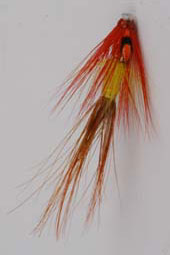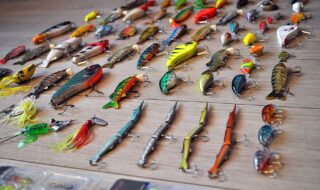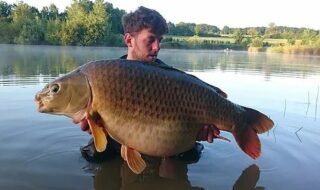This is a cracking adaptation of a classic Irish shrimp fly. Dressed on a plastic or aluminium tube and with plenty of hackle, it’s also very ‘light’ in the water, helping it stay mobile in even the slowest of currents. This pattern works throughout the season, and can be dressed in all sizes from a 1/2in to 3in tube. Try larger sizes on sinking lines when the water is high or cold, and smaller ones when it’s low. Try wiggling the rod tip as the fly swims in the current to give the hackles even more movement.
Tube: Plastic or aluminium, 1/2in to 3in
Thread: Red or hot orange
Tail: Golden pheasant flank feather
Rib: Gold wire
Rear body: Yellow floss
Rear hackle: Yellow cock
Front body: Flat gold tinsel
Front hackle: Red cock
Cheeks: Dyed red jungle cock
How to tie the fly
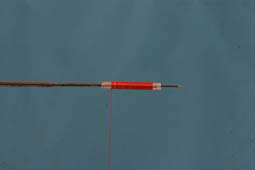
1. Wind your thread, in touching turns, down to the end of the tube, leaving enough tube bare to add silicone tubing. |
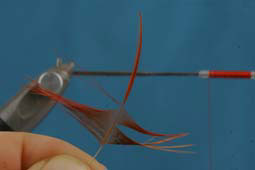
2. Take a golden pheasant flank feather and stroke the fibres back to leave the tip. |
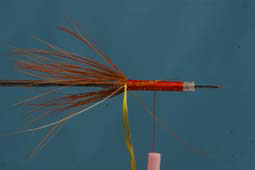
3. Tie in the hackle by the tip and make several turns to form the tail. Tie over the base before tying in the wire and floss. |
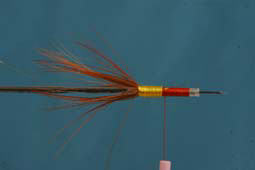 4. Wind the floss halfway up the body in touching turns before tying it off and cutting the excess.
|
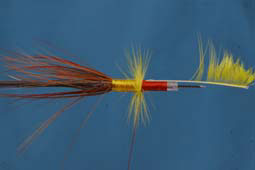 5. Tie in the yellow hackle and make three to four turns. Tie it off but don’t cut the excess (this forms an even underbody). |
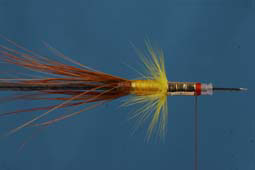 6. Make an even body using the flat gold tinsel, before tying it off. Rib the fly using open turns with the gold wire, taking care not to trap any hackle. |
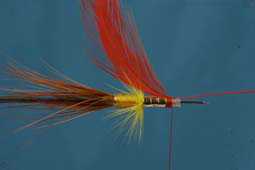 7. Select a red hackle with fibres long enough to reach the base of the tail. Tie it in, leaving room for the head of the fly. |
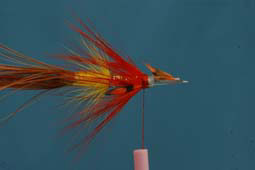 8. Make three to four turns of hackle, tie it off and remove the excess. Tie in a jungle cock feather on either side of the tube. |
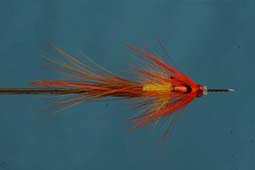 9. Clip the jungle cock stalks away, form a tight, neat head and whip finish. Add at least one coat of varnish to complete the fly. |


